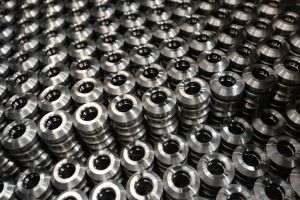The domestic defense industry can be revived, if a series of measures intended to lead to increased competitiveness and efficiency are considered, says Aurel Cazacu, general manager at Criabo Defense&Security. Yesterday, he told us that implementing private management at weapons makers represent one of the main ways for the domestic weapons industry to become competitive once again on a European level.
He also said: "Romania needs a strategy in the defense and security industry, which, based on a legislation adapted to the legislation of the EU that would lead to the creation of a modern defense and security industry, which can support the outfitting and the equipping of the institutions from the national defense system through our own institutions or through cooperation with foreign companies". Also, according to the statements of Mr. Cazacu, the Romanian defense industry must adapt to the current international context, as well as to the new technologies on the market.
"Considering the missions that the institutions from the national defense system have to fulfill, they can't be forced to buy the output of the Romanian defense industry, rather the defense industry must produce on its own what the Romanian users need or cooperate with foreign companies to do so, in the field of military and security equipment", he concluded.
Demand is currently ten times greater than the output capacity of the industry, Aurel Cazacu told us.
• Global weapons sales have increased 51% over the last ten years
The arms industry remains a profitable business for the exporting industry, as world sales of weapons have increased over the last few years, according to the latest report of the Stockholm International Peace Research Institute.
Sales of weapons between 2002-2011 have increased 51% compared to the previous years, according to the study in question states.
On a global level, sales of weapons are concentrated around a few countries, the first five exporters, the US, Russia, Germany, France and China. The United States account for over 30% of the world's exports of military weapons.
The largest importers of American weapons are South Korea (15%), Israel (13%) and the United Arab Emirates (10%). According to a report of the American congress, in 2011, the United States of America have granted arms exports licenses worth approximately 44.3 billion dollars.
Russia is the second largest weapons seller, supplying over 23% of the total arms trade. Russia's most important customers are China and India, according to Russian officials.
The world's third largest arms exporter is Germany, which saw its exports double in the last five years. The largest volumes of weapons were sold to the two rival countries, Turkey and Greece, as well as to states in the Persian Gulf.
Also, according to the SIPRI, between 1998 and 2001, the United States of America, Great Britain and France have made more money from the sales of weapons to developing countries than the amounts they gave out as humanitarian aid.
As for the state of the Romanian arms industry, the first decade after the Revolution, it saw a net drop of the exports of weapons made in Romania, from annual amounts of more than 100 million dollars, (121 million dollars in 1994, 167 million dollars in 1995) to 37.8 million dollars in 2000, to 24.5 million dollars in 2001, according to data supplied by the Department for the Control of Exports.
Over the last ten years, the United States have become one of the most important export markets, together with countries such as Pakistan, India, Turkey, Egypt, Jordan, Iraq or Azerbaijan.
• Putin attacks the missile shield
The missile shield from Europe continues to be a threat to Russia, as president Vladimir Putin yesterday harshly criticized the US and Romania for launching the project. "The attempts to disturb the strategic balance continue. They concern first of all the plans to build the American missile shield", the official from Kremlin said yesterday.
The relations between Moscow and Washington are marked by a series of tensions concerning the American missile shield in Europe, which the US claims is intended to mitigate the threats of North Korea and Iran, while Russia views this project as an attempt to undermine the Russian security.
















































